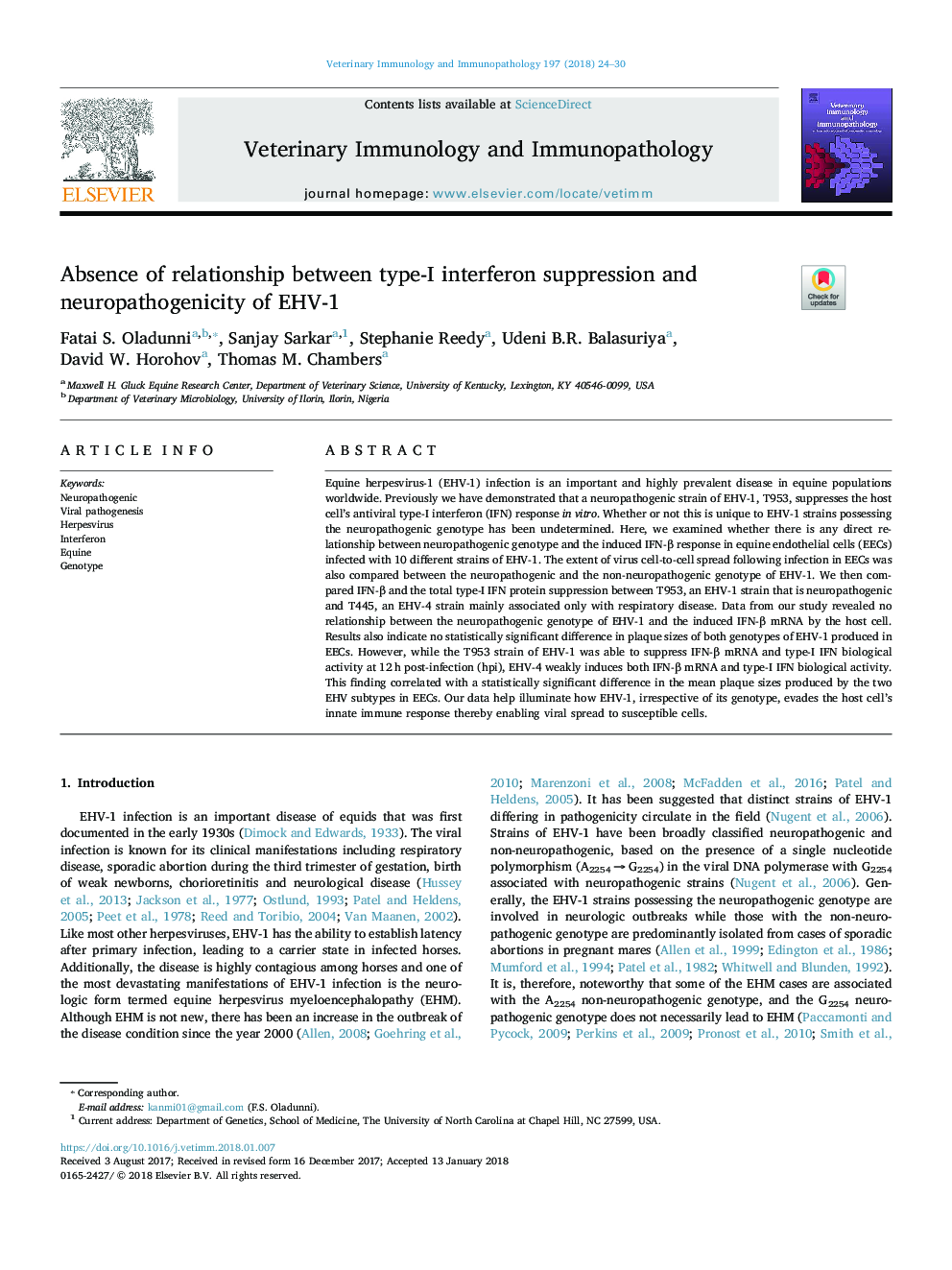| Article ID | Journal | Published Year | Pages | File Type |
|---|---|---|---|---|
| 8504741 | Veterinary Immunology and Immunopathology | 2018 | 7 Pages |
Abstract
Equine herpesvirus-1 (EHV-1) infection is an important and highly prevalent disease in equine populations worldwide. Previously we have demonstrated that a neuropathogenic strain of EHV-1, T953, suppresses the host cell's antiviral type-I interferon (IFN) response in vitro. Whether or not this is unique to EHV-1 strains possessing the neuropathogenic genotype has been undetermined. Here, we examined whether there is any direct relationship between neuropathogenic genotype and the induced IFN-β response in equine endothelial cells (EECs) infected with 10 different strains of EHV-1. The extent of virus cell-to-cell spread following infection in EECs was also compared between the neuropathogenic and the non-neuropathogenic genotype of EHV-1. We then compared IFN-β and the total type-I IFN protein suppression between T953, an EHV-1 strain that is neuropathogenic and T445, an EHV-4 strain mainly associated only with respiratory disease. Data from our study revealed no relationship between the neuropathogenic genotype of EHV-1 and the induced IFN-β mRNA by the host cell. Results also indicate no statistically significant difference in plaque sizes of both genotypes of EHV-1 produced in EECs. However, while the T953 strain of EHV-1 was able to suppress IFN-β mRNA and type-I IFN biological activity at 12â¯h post-infection (hpi), EHV-4 weakly induces both IFN-β mRNA and type-I IFN biological activity. This finding correlated with a statistically significant difference in the mean plaque sizes produced by the two EHV subtypes in EECs. Our data help illuminate how EHV-1, irrespective of its genotype, evades the host cell's innate immune response thereby enabling viral spread to susceptible cells.
Related Topics
Life Sciences
Agricultural and Biological Sciences
Animal Science and Zoology
Authors
Fatai S. Oladunni, Sanjay Sarkar, Stephanie Reedy, Udeni B.R. Balasuriya, David W. Horohov, Thomas M. Chambers,
